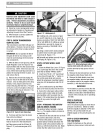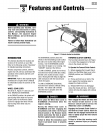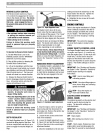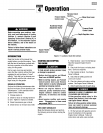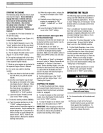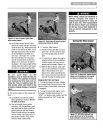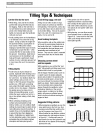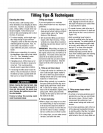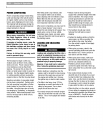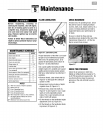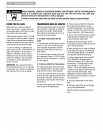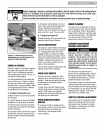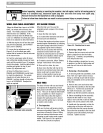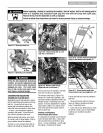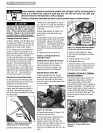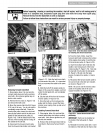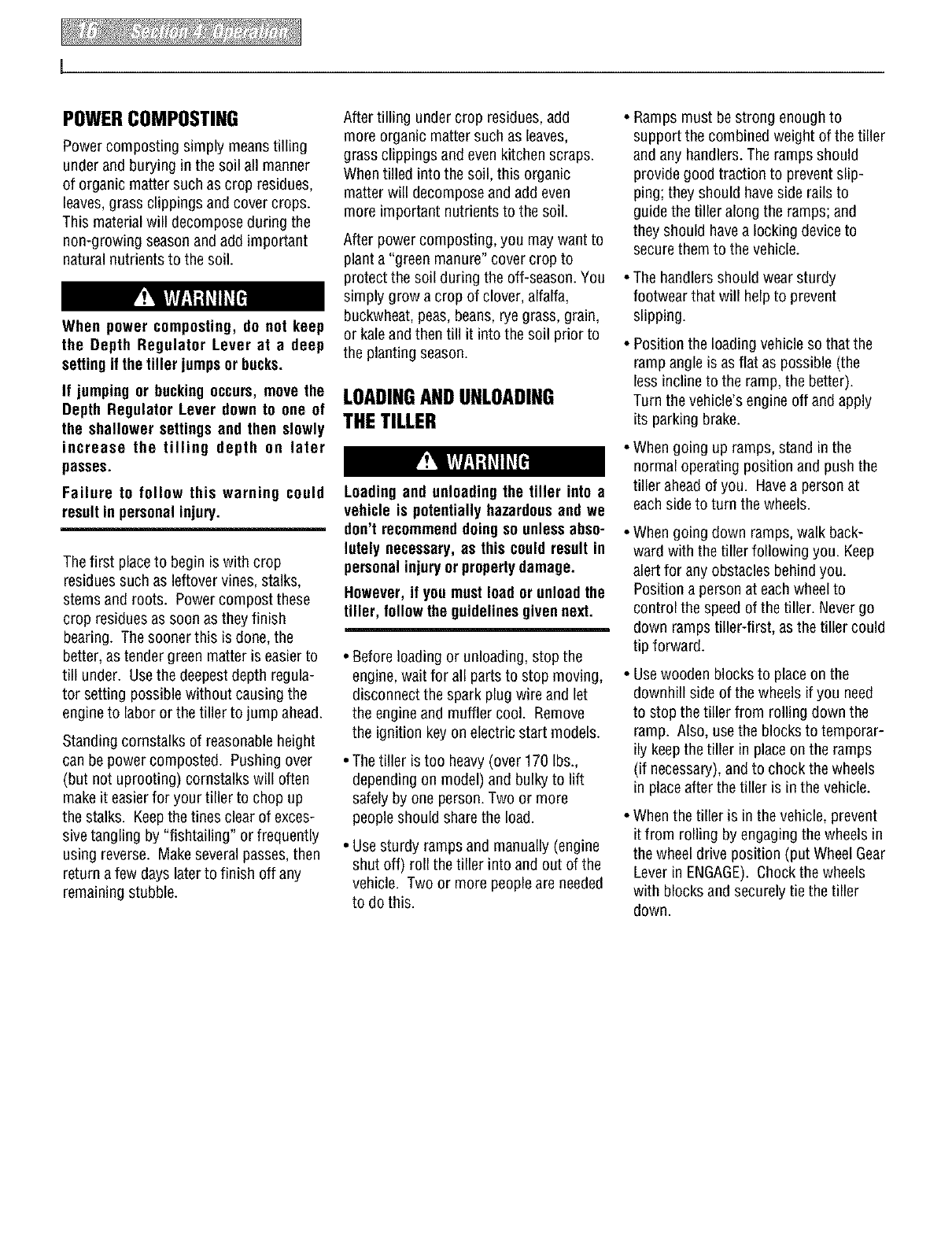
POWERCOMPOSTING
Powercomposting simply meanstilling
under and burying in the soil all manner
of organic matter such ascrop residues,
leaves,grass clippings and cover crops.
This materialwill decomposeduring the
non-growing season and add important
naturalnutrients to the soil.
When power composting, do not keep
the Depth Regulator Lever at a deep
settingifthetiller jumpsor bucks.
If jumping or buckingoccurs, move the
Depth Regulator Lever down to one of
the shallower settings and then slowly
increase the tilling depth on later
passes.
Failure to follow this warning could
resultin personalinjury.
Thefirst placeto begin is with crop
residues such as leftovervines, stalks,
stems and roots. Powercompost these
crop residues as soonasthey finish
bearing. Thesooner this isdone, the
better,astender green matter is easierto
till under. Usethe deepestdepth regula-
tor setting possiblewithout causing the
engine to labor or the tiller to jump ahead.
Standing cornstalks of reasonableheight
can be power composted. Pushing over
(but not uprooting) cornstalkswill often
makeit easierfor your tiller to chop up
the stalks. Keepthe tines clear of exces-
sive tangling by "fishtailing" or frequently
using reverse. Make severalpasses,then
return afew days laterto finish off any
remainingstubble.
After tilling under crop residues,add
more organic matter such as leaves,
grass clippings and evenkitchen scraps.
Whentilled into the soil, this organic
matter will decomposeand add even
more important nutrients to the soil.
After powercomposting, you may want to
plant a "green manure" cover crop to
protect the soil during the off-season.You
simply grow a crop of clover, alfalfa,
buckwheat,peas, beans,ryegrass, grain,
or kaleand then till it into the soil prior to
the planting season.
LOADINGANDUNLOADING
THE TILLER
Loading and unloading the tiller into a
vehicle is potentially hazardousand we
don't recommenddoingso unlessabso-
lutely necessary,as this could result in
personalinjuryor propertydamage.
However, if you mustload or unloadthe
tiller, follow theguidelines given next.
• Beforeloading or unloading, stop the
engine,wait for all parts to stop moving,
disconnect the spark plug wire and let
the engine and muffler cool. Remove
the ignition keyon electric start models.
• Thetiller istoo heavy(over 170 Ibs.,
depending on model) and bulky to lift
safelyby one person. Two or more
peopleshould sharethe load.
• Usesturdy ramps and manually (engine
shut off) roll thetiller into and out of the
vehicle. Two or more peopleare needed
to do this.
• Ramps must bestrong enoughto
support the combined weight of the tiller
and anyhandlers. Theramps should
provide good traction to preventslip-
ping; they should haveside rails to
guide the tiller along the ramps;and
they should havealocking deviceto
securethem to the vehicle.
• Thehandlersshould wear sturdy
footwear that will helpto prevent
slipping.
• Position the loading vehicle sothat the
ramp angle isas flat as possible (the
less incline to the ramp, the better).
Turn thevehicle's engineoff and apply
its parking brake.
• Whengoing up ramps, stand in the
normal operating position and push the
tiller ahead ofyou. Havea personat
eachsideto turn the wheels.
• Whengoing down ramps,walk back-
ward with thetiller following you. Keep
alertfor any obstacles behindyou.
Position a personat eachwheelto
control the speedof thetiller. Nevergo
down ramps tiller-first, asthetiller could
tip forward.
• Usewooden blocks to placeon the
downhill sideof the wheels if you need
to stop thetiller from rolling down the
ramp. Also,usethe blocksto temporar-
ily keepthetiller in placeon the ramps
(if necessary),and to chockthe wheels
in placeafter thetiller is in the vehicle.
• Whenthe tiller is in the vehicle, prevent
it from rolling byengaging thewheels in
thewheel drive position (put WheelGear
Leverin ENGAGE).Chockthe wheels
with blocks and securelytie the tiller
down.



